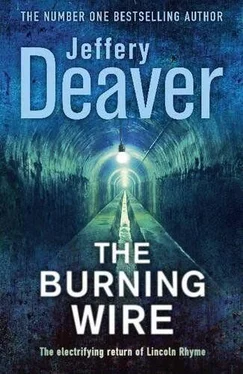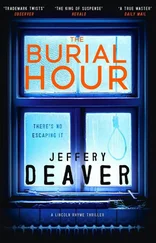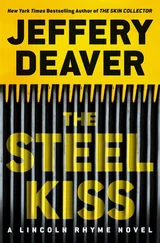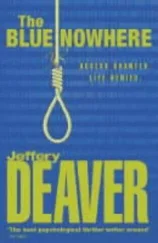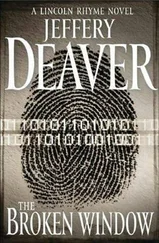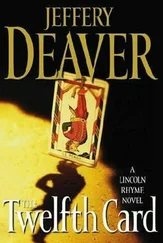Jeffery Deaver - The burning wire
Здесь есть возможность читать онлайн «Jeffery Deaver - The burning wire» весь текст электронной книги совершенно бесплатно (целиком полную версию без сокращений). В некоторых случаях можно слушать аудио, скачать через торрент в формате fb2 и присутствует краткое содержание. Жанр: Триллер, на английском языке. Описание произведения, (предисловие) а так же отзывы посетителей доступны на портале библиотеки ЛибКат.
- Название:The burning wire
- Автор:
- Жанр:
- Год:неизвестен
- ISBN:нет данных
- Рейтинг книги:5 / 5. Голосов: 1
-
Избранное:Добавить в избранное
- Отзывы:
-
Ваша оценка:
- 100
- 1
- 2
- 3
- 4
- 5
The burning wire: краткое содержание, описание и аннотация
Предлагаем к чтению аннотацию, описание, краткое содержание или предисловие (зависит от того, что написал сам автор книги «The burning wire»). Если вы не нашли необходимую информацию о книге — напишите в комментариях, мы постараемся отыскать её.
The burning wire — читать онлайн бесплатно полную книгу (весь текст) целиком
Ниже представлен текст книги, разбитый по страницам. Система сохранения места последней прочитанной страницы, позволяет с удобством читать онлайн бесплатно книгу «The burning wire», без необходимости каждый раз заново искать на чём Вы остановились. Поставьте закладку, и сможете в любой момент перейти на страницу, на которой закончили чтение.
Интервал:
Закладка:
Rhyme and Susan Stringer found themselves alone. As he stared at the chart he was aware that the woman was looking him over closely. Uneasy, he turned toward her, trying to figure out how to get her to leave. She'd come, she'd helped, she'd met the celebrity crip. Time to get on with things.
She asked, "You're C4, right?"
This meant his injury was at the fourth cervical vertebra, four bones down in his spine from the base of the skull.
"Yes, though I've got a little motion in my hands. No sensation."
Technically his was a "complete" injury, meaning that he'd lost all sensory function below the site of the injury ("incomplete" patients can have considerable movement). But the human body is quirky, and a few electric impulses escaped over the barricade. The wiring was faulty but not wholly severed.
"You're in good shape," she said. "Musclewise."
Eyes back on the whiteboards, he said absently, "I do range-of-motion exercises every day and functional electric stimulation to keep the tone up."
Rhyme had to admit that he enjoyed the exercise. He explained that he worked out on a treadmill and stationary bike. The equipment moved him, not the other way around, but it still built up muscles and seemed to have been responsible for the recent movement he'd regained in his right hand, whereas after the accident only his left ring finger worked.
He was in better shape now than before the injury.
He told her this and he could see from her face that she understood; she flexed. "I'd ask you to arm wrestle, but…"
A genuine laugh from Rhyme's throat.
Then her face grew solemn and she glanced around to see if anyone else could hear. When it was clear none could she turned back, held his eyes and said, "Lincoln, do you believe in fate?"
Chapter 53
THERE IS A certain camaraderie in the disabled world.
Some patients have the band of brothers attitude-It's us against them. Don't mess with us. Others take a more huggy approach: Hey, you ever need to cry on somebody's shoulder, I'm here for you. We're all in this together, friend.
But Lincoln Rhyme didn't have time for either. He was a criminalist who happened to have a body that didn't operate the way he would have liked. Like Amelia Sachs was a cop with arthritis and a love of fast cars and guns.
Rhyme didn't define himself by his disability. It was an afterthought. There were pleasant crips and witty ones and those who were insufferable pricks. Rhyme judged them one by one, as he did everybody else.
He thought Susan Stringer was a perfectly pleasant woman and respected her courage in coming here when she could have stayed home and nursed her wounds and exploited her trauma. But they had nothing in common other than a spinal cord injury, and Rhyme's mind was already back to the Galt case; he suspected Susan was soon to be disappointed that the famous gimp criminalist she'd come to see had little time for her.
And he sure as hell wasn't anybody to talk to about fate.
"No," he answered her, "probably not in the sense you mean."
"I'm referring to what seems to be coincidence actually could be events that were meant to happen."
He confirmed, "Then, no."
"I didn't think so." She was smiling. "But the good news for people like you is that there are people like me who do believe in fate. I think there's a reason I was in that elevator and I'm here now." The smile turned into a laugh. "Don't worry. I'm not a stalker." A whisper. "I'm not after a donation… or after your body. I'm happily married and I can see that you and Detective Sachs are together. It's not about that. It's solely about you."
He was about to… well, he wasn't sure what he was about to do. He simply wanted her to leave but didn't quite know how to engineer it. So he lifted a curious, and cautious, eyebrow.
She asked, "Have you heard about the Pembroke Spinal Cord Center, over on Lexington?"
"I think so. I'm not sure." He was forever getting information about spinal cord injury rehab and products and medical updates. He'd stopped paying much attention to the flood of material; his obsession with the cases he was running for the Bureau and the NYPD greatly limited his time for extracurricular reading, much less chasing around the country in search of new treatments.
Susan said, "I've been in several programs there. Some people in my SCI support group have too."
SCI support group. His heart sank. He saw what was coming.
But again, she was a step ahead. "I'm not asking you to join us, don't worry. You don't look like you'd be a good member." The eyes sparkled humorously in her heart-shaped face. "Of anything."
"No."
"All I'm asking tonight is that you hear me out."
"I can do that."
"Now, Pembroke is the D-day of spinal cord treatment. They do everything."
There were many promising techniques to help people with severe disabilities. But the problem was funding. Even though the injuries were severe, and the consequences lifelong, the reality was that when compared with other maladies, serious spinal cord problems were relatively rare. Which meant that government and corporate research money went elsewhere, to procedures and medicines that would help more people. So most of the procedures that promised significant improvements in patients' conditions remained experimental and unapproved in America.
And some of the results were remarkable. In research labs, rats with severed spinal cords had actually learned to walk again.
"They have a critical response unit, but that won't do us any good, of course."
The key to minimizing spinal cord damage is to treat the affected area immediately after the accident with medications that prevent swelling and future killing of the nerves at the site of the injury. But there's a very small window of opportunity to do that, usually hours or at the most days after the injury.
As veteran patients, Rhyme and Susan Stringer could take advantage only of techniques to repair the damage. But that always ran up against the intractable problem: Central nervous system cells-those in the brain and spinal cord-don't regenerate the way the skin on your finger does after a cut.
This was the battle that SCI doctors and researchers fought daily, and Pembroke was in the vanguard. Susan described an impressive array of techniques that the center offered. They were working with stem cells, doing nerve rerouting-using peripheral nerves (any nerve outside the spinal cord, which can regenerate)-and treating the injured areas with drugs and other substances to promote regeneration. They were even building noncellular "bridges" around the location of the injury to carry nerve impulses between the brain and the muscles.
The center also had an extensive prosthetics department.
"It was amazing," she told him. "I saw a video of this paraplegic who'd been implanted with a computer controller and a number of wires. She could walk almost normally."
Rhyme was staring at the length of the Bennington cable that Galt had used in the first attack.
Wires…
She described something called the Freehand system, and others like it, that involved implanting stimulators and electrodes in the arms. By shrugging your shoulders or moving your neck in a certain way, you could trigger coordinated movements of the arm and hands. Some quads, she explained, could even feed themselves.
"None of that bullshit quackery you see, doctors preying on the desperate." Susan angrily mentioned a doctor in China who'd pocket $20,000 to drill holes in patients' heads and spines to implant tissue from embryos. With, of course, no discernible effect-other than exposing the patient to risk of death, further injury and bankruptcy.
The people on the staff at Pembroke, she explained, were all from the top medical schools from around the world.
Читать дальшеИнтервал:
Закладка:
Похожие книги на «The burning wire»
Представляем Вашему вниманию похожие книги на «The burning wire» списком для выбора. Мы отобрали схожую по названию и смыслу литературу в надежде предоставить читателям больше вариантов отыскать новые, интересные, ещё непрочитанные произведения.
Обсуждение, отзывы о книге «The burning wire» и просто собственные мнения читателей. Оставьте ваши комментарии, напишите, что Вы думаете о произведении, его смысле или главных героях. Укажите что конкретно понравилось, а что нет, и почему Вы так считаете.
